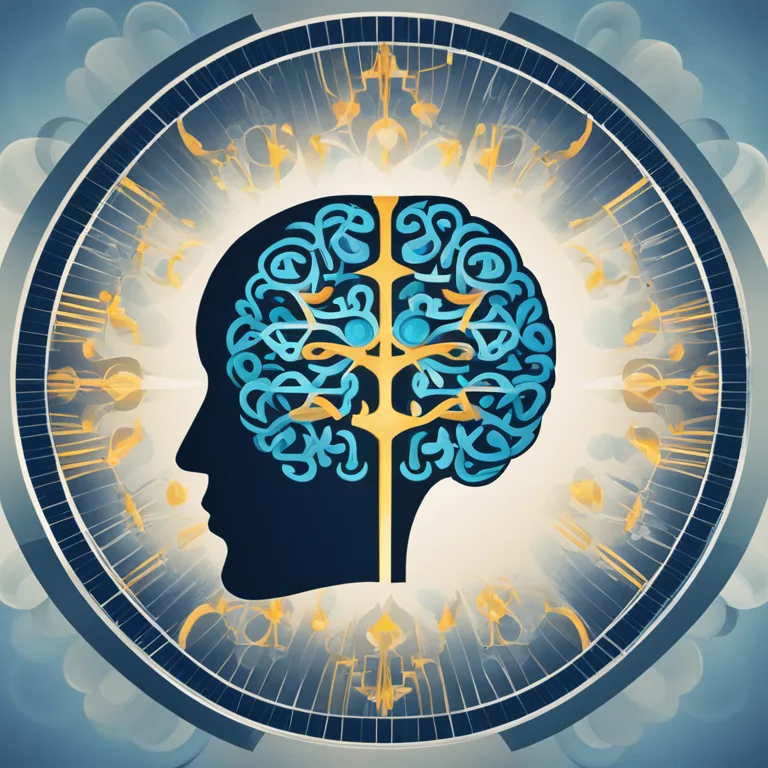
Neural Pathways to Peace: Meditation Techniques
Discover how modern neuroscience illuminates meditation practices to foster well-being and mental health.
article by Hina Kurosawa
The Bond Between Brain and Meditation
Meditation, once an esoteric practice rooted in ancient traditions, has become a subject of keen interest in the world of neuroscience. Recent studies continuously reveal how this quiet introspection changes the brain's structure and function. Researchers utilize advanced technologies like fMRI and EEG to observe the brain's activity during meditation, demonstrating tangible shifts in areas related to attention, emotion regulation, and self-awareness. These insights not only confirm traditional wisdom but also pave new pathways for therapeutic applications.

Building a Stress-Resistant Brain
Among the most compelling discoveries is meditation's ability to mitigate stress. Several neural circuits are involved in the stress response, including the amygdala, known as the brain's "alarm system." Regular meditation practice reduces the amygdala's reactivity to stressors, leading to enhanced emotional equilibrium. This neural adaptation is akin to fortifying the mind against life's inevitable pressures, fostering resilience that extends beyond the meditation cushion.

A Shift to Mindful Awareness
Neuroscience reveals that meditation also strengthens the prefrontal cortex – the seat of our higher cognitive functions. This portion of the brain becomes more active during meditation, improving concentration and decision-making. Simultaneously, the default mode network (DMN), associated with mind-wandering and self-referential thoughts, shows decreased activity. This suggests a neural basis for the transition from distracted rumination to a state of present-centered awareness that characterizes mindfulness meditation.

Reshaping Neural Plasticity
In the realm of neural plasticity, meditation emerges as a potent agent. It not only changes the brain's activity but also its structure. Long-term practitioners exhibit increased gray matter density in regions linked to learning, memory, and emotional regulation. Neuroplasticity, the brain's ability to reorganize itself, means these benefits are not solely reserved for lifelong meditators; even beginners can experience changes with consistent practice.

Enhancing Connection and Compassion
Another intriguing area of study focuses on how meditation fosters social connectedness and compassion. The so-called ‘compassion meditation’ strengthens circuits in the brain involved in empathy and understanding others' emotions. As individuals become more attuned to the feelings of those around them, they develop a more profound sense of kinship and altruism, virtues that are increasingly vital in our interconnected world.
Mindfulness as Therapy
Given these benefits, it's little wonder that therapeutic modalities like Mindfulness-Based Stress Reduction (MBSR) and Mindfulness-Based Cognitive Therapy (MBCT) have gained prominence. These programs, grounded in the principles of neuroscience, offer structured ways to apply meditation's benefits to combat conditions like depression, anxiety, and chronic pain. They embody the convergence of ancient practice and modern science, providing accessible tools for mental health maintenance.
Published: 12/20/2023
Modified: 12/20/2023
More predictions
Come back here soon to learn more about yourself and your future


Jedi Meditation Techniques for Inner Peace
Master Jedi meditation techniques to enhance your mindfulness and connect with the Force within and around you.


Meditation: The Most Powerful Techniques
Discover the most impactful meditation practices to elevate your mental and spiritual wellbeing in today's fast-paced world.


Meditation Techniques to Soothe Anger
Discover effective meditation practices tailored to calm anger and promote inner peace, with a focus on astrology and holistic well-being.